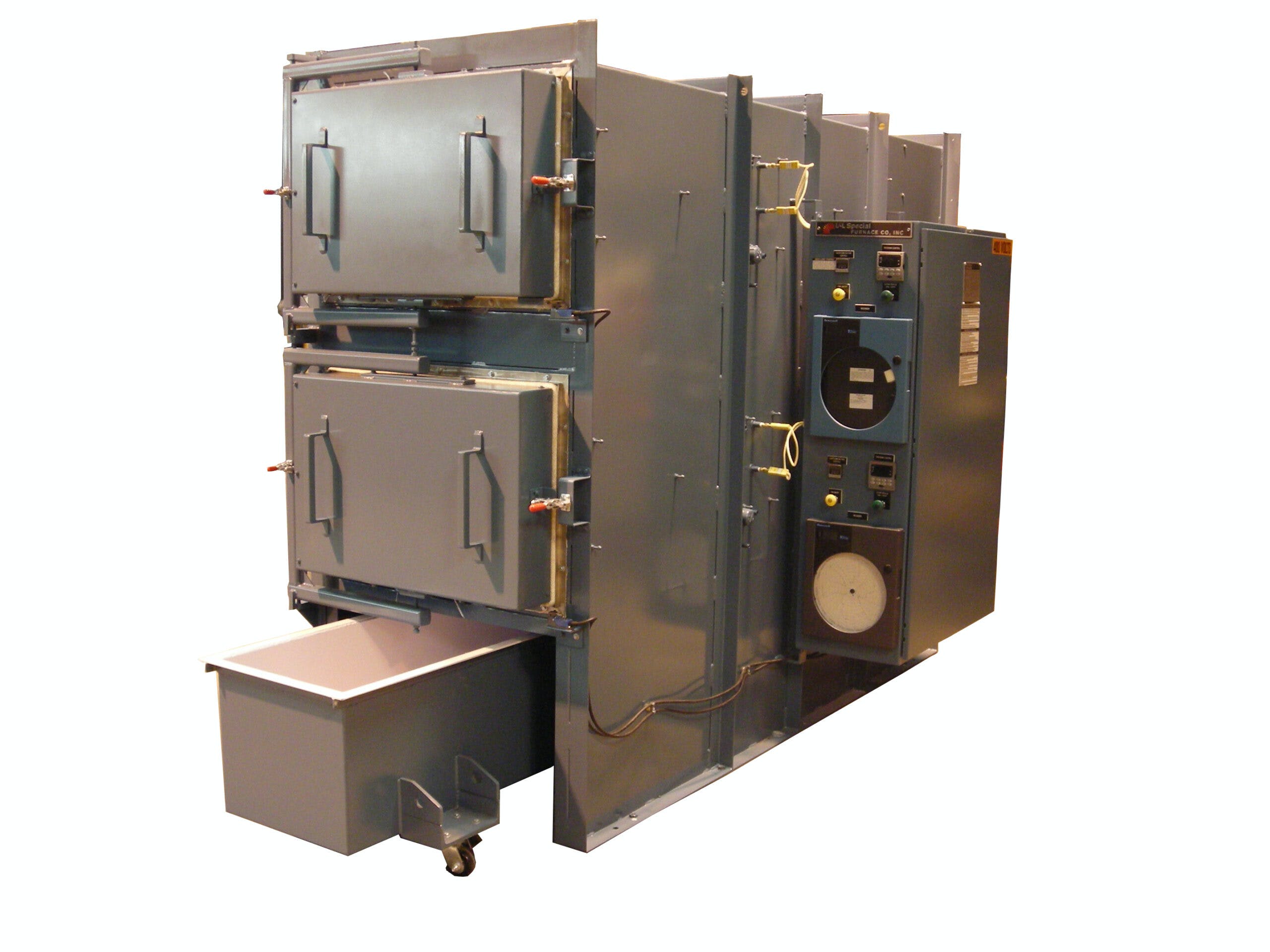Precipitation hardening, also sometimes referred to as artificial aging, is a heat treatment process used to bring some aluminum alloys to maximum hardness when natural aging alone is not enough. It is performed after solution heat treatment is complete and the process allows for the dissolved elements from the prior heat treatment to fully precipitate out.
Precipitation Hardening Process
Atmosphere
Precipitation hardening is done in either a vacuum or an inert gas atmosphere at operating temperatures ranging from 300 to 1,400°F (149 to 760°C). The vacuum or inert gas atmosphere prevents the chemical reactions taking place within the aluminum from further reacting with exterior elements which could cause negative side effects.
Heat Treatment
The precipitation hardening process starts after solution heat treatment and the first round of quenching has been completed. The aluminum alloy is then heated again to a specific temperature between 240 and 460°F +/- 5°F (116 and 238°C +/- 3°C). The exact temperature the aluminum is heated to depends on the specific alloying elements within it.
This heating forces the atoms which make up the alloy to form ordered arrays. Certain arrays of atoms can lead to increased physical benefits, such as increased strength or hardness. The most well-known example of this is how carbon atoms can be arranged in a particular array due to temperature and pressure to form diamond — an extremely hard material. Precipitation hardening of aluminum alloys follows the same principle.
Finally, the dissolved elements within the alloy precipitate out of the part. This removes any unwanted properties which may have been introduced during the solution heat treatment step of the process.
Quenching
After the part has been heated, it is time for the second round of quenching. This time around, the part is soaked for between 6 and 24 hours. Typically aluminum will be quenched in water, but sometimes a light brine is used instead. Different quenching media will have different quench rates and will affect parts differently as well. It is important to know the proper media to use for the part you are quenching and the desired properties.
After the soaking is complete, the part is left to cool in the air at room temperature. The length of time the part is left to cool will vary depending on the part. All aluminum alloys require water (or light brine) quenching, but some alloys harden as they age in the air as well. Parts such as rivets are one example of those which benefit from air aging.
Benefits of Precipitation Hardening

Precipitation hardening creates a harder, stronger metal. Aluminum is a fairly soft metal, so this process can significantly increase its yield strength, increase its tensile strength, and increase its wear resistance. Yield strength refers to how much stress a part can withstand without permanently distorting. Tensile strength refers to how much pulling and stretching stress a part can withstand without failing. And wear resistance is simply how well the part holds up to surface scratching and pitting. All three of these beneficial properties will lengthen the lifetime of the part which has been precipitation hardened.
An additional benefit is that the part has decreased ductility. This is almost a combination of the increase in yield and tensile strength. It means that the part will be able to withstand more tensile stress before becoming deformed — which is slightly different than failing due to tensile stress. Both failing and deformation are often not ideal, so having high tensile strength and low ductility is good.
The final benefit of precipitation hardening for aluminum is that it does not cause the part to distort. Distortion is a fairly common problem to run into when it comes to both heat treatment and quenching. However, precipitation hardening involves a much lower risk of this happening.
Precipitation Hardened Aluminum Part Applications
Aluminum which has been precipitation hardened tends to be used in applications where both light weight and strength are needed. When it comes to engine parts, aircraft parts, and other aerospace applications, lightweight parts are a necessity, but strength cannot be compromised.
Aluminum is one of the most desirable metals to use in the automotive and aerospace industries because its light weight allows for more efficient locomotion. Heavier vehicles require more energy to move, so reducing weight wherever possible saves both time and money in the long run. However, using the lightest materials possible is not a good idea if those materials are unable to withstand the stresses of the job. Standard aluminum simply is not strong enough to be used for many of these applications, which is why precipitation hardening is necessary. It keeps the beneficial properties of aluminum, such as the light weight, while adding in the much-needed strength to make vehicles safe.
Conclusion
Precipitation hardening is one heat treatment process by which aluminum alloys can be strengthened in a variety of ways. And this process, also known as artificial aging, is actually performed after a previous round of solution heat treatment and quenching. The purpose of then using precipitation hardening is to remove any negative properties added to the material through solution heat treatment while also increasing both yield and tensile strength. Once hardened, the aluminum alloy is then frequently used in both the automotive and aerospace industries where strong, lightweight materials are prized.
L&L Special Furnace
If your business manufactures parts for the automotive and aerospace industries, the ability to artificially age aluminum alloys is a must. You can only go so far with naturally aged aluminum, and that’s why you need a specially designed furnace from L&L. We manufacture a wide variety of industrial-grade furnaces, including those which are purpose-built for precipitation hardening. Contact us today for more information on which of our furnaces is right for you.
